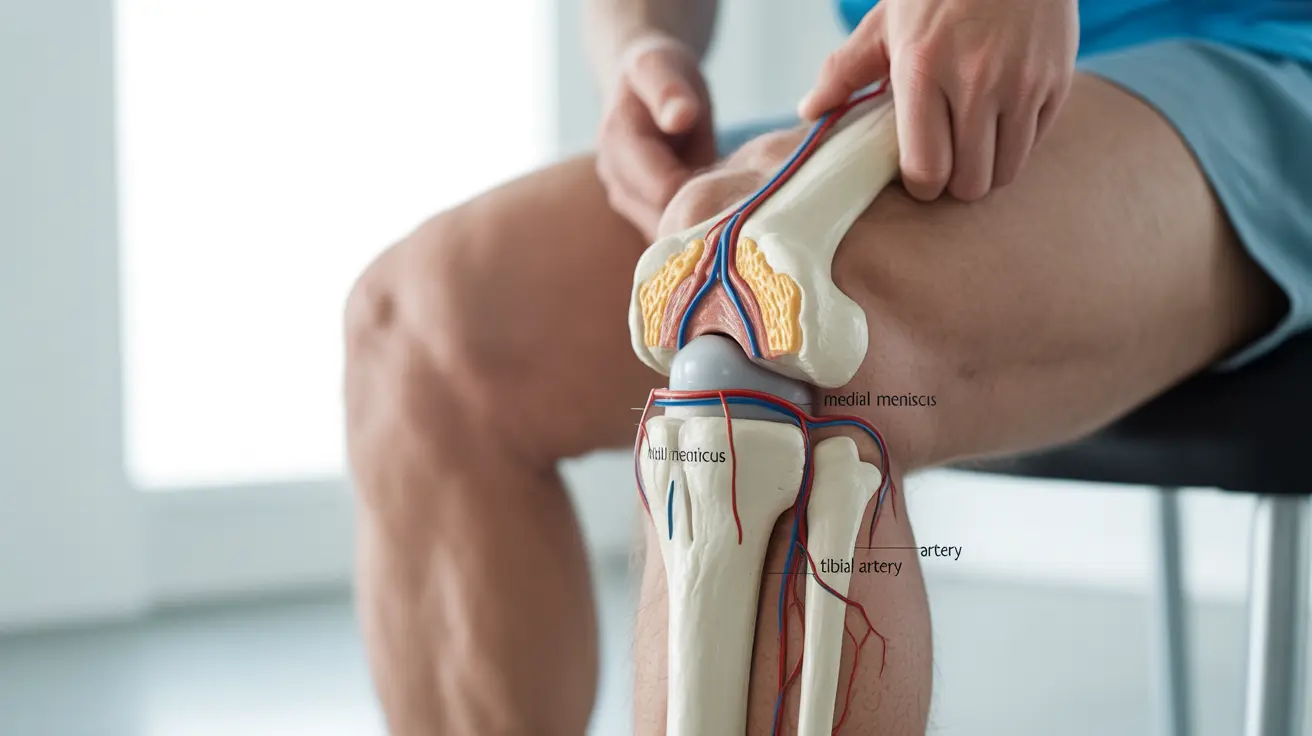Many people adopt the habit of sitting on their knees during various activities, from meditation and yoga to playing with children on the floor. While this position might feel comfortable initially, prolonged sitting on knees can lead to significant health concerns that affect your joint health, circulation, and overall well-being.
Understanding the potential risks associated with this sitting position and learning proper alternatives can help you maintain better knee health and prevent long-term complications. Let's explore the science behind why sitting on knees can be problematic and what you can do to protect your joints.
Understanding the Anatomy Behind Knee Stress
When you sit on your knees, you're placing your full body weight directly onto the kneecaps and surrounding tissues. The patella, or kneecap, is designed to glide smoothly over the femur during movement, but sustained pressure from sitting on knees can disrupt this natural function.
The position creates compression forces that affect multiple structures within the knee joint, including cartilage, ligaments, and the joint capsule. Additionally, the blood vessels and nerves that run behind and around the knee can become compressed, leading to reduced circulation and potential nerve irritation.
Immediate Physical Risks of Prolonged Knee Sitting
Circulation Problems
One of the most immediate concerns when sitting on knees is the restriction of blood flow. The compressed blood vessels can't efficiently deliver oxygen and nutrients to the lower legs and feet, often resulting in that familiar "pins and needles" sensation or complete numbness.
This reduced circulation can be particularly problematic for individuals with existing cardiovascular conditions or diabetes, where proper blood flow is already compromised.
Joint Compression and Cartilage Stress
The weight-bearing nature of sitting on knees creates excessive pressure on the knee joint cartilage. Unlike the natural compression and release that occurs during walking or other activities, sustained sitting on knees provides no relief for these tissues.
Over time, this constant pressure can contribute to cartilage wear, potentially accelerating the development of degenerative joint conditions.
Long-Term Health Consequences
Impact on Knee Joint Health and Arthritis Risk
Regular and prolonged sitting on knees can contribute to the development or worsening of osteoarthritis. The excessive pressure on joint surfaces can accelerate cartilage breakdown, leading to pain, stiffness, and reduced mobility over time.
For individuals already dealing with knee arthritis, this sitting position can exacerbate symptoms and potentially speed up joint deterioration. The inflammation associated with arthritis can be worsened by the additional mechanical stress.
Runner's Knee and Patellofemoral Issues
Patellofemoral pain syndrome, commonly known as runner's knee, can be triggered or worsened by sitting on knees. The sustained pressure on the kneecap can irritate the cartilage beneath it, leading to pain around the front of the knee.
This condition is characterized by a dull, aching pain that worsens with activities like climbing stairs, squatting, or sitting for extended periods – ironically, the very position that may have contributed to its development.
Nerve and Muscle Complications
Extended periods of sitting on knees can compress the peroneal nerve, which runs along the outside of the knee. This compression can lead to a condition called "foot drop," where you have difficulty lifting the front part of your foot.
Additionally, the muscles in your legs and feet may become weak or tight due to the prolonged compression and reduced blood flow. This can affect your gait and overall lower body function even after you change positions.
Optimal Sitting Positions for Knee Health
Chair-Based Alternatives
The most knee-friendly sitting position involves using a chair with proper back support. Keep your feet flat on the floor with your knees bent at approximately 90 degrees. This position maintains natural joint alignment while avoiding excessive pressure on any single joint.
If you need to sit on the floor, consider using a meditation cushion or folded blanket to elevate your hips slightly above your knees, reducing the pressure on your knee joints.
Cross-Legged Sitting Modifications
When floor sitting is necessary, cross-legged positions distribute weight more evenly across your sitting bones rather than concentrating it on your knees. Place cushions under each knee for additional support and to reduce strain on your hip flexors.
Remember to change positions regularly, ideally every 15-20 minutes, to prevent stiffness and maintain healthy circulation.
Prevention Strategies and Healthy Habits
Movement and Stretching Routines
Incorporating regular movement breaks into your daily routine is essential for maintaining knee health. Simple exercises like ankle circles, calf raises, and gentle knee extensions can help maintain circulation and joint mobility.
Stretching the quadriceps, hamstrings, and calf muscles regularly can help maintain flexibility and reduce the risk of stiffness that might make you more inclined to sit in compromising positions.
Strengthening Exercises
Building strength in the muscles that support your knees can help protect these joints from injury. Focus on exercises that target the quadriceps, hamstrings, and glutes, such as squats, lunges, and leg raises.
Strong supporting muscles can better absorb forces and reduce the stress placed directly on your knee joints during various activities.
When to Seek Medical Attention
If you experience persistent knee pain, swelling, or stiffness after sitting on your knees, it's important to consult with a healthcare professional. Additionally, any numbness, tingling, or weakness in your legs or feet that doesn't resolve quickly after changing positions warrants medical evaluation.
Early intervention can prevent minor issues from developing into more serious conditions that might require extensive treatment or rehabilitation.
Frequently Asked Questions
- What are the risks of sitting on your knees for long periods?
Extended sitting on knees can cause circulation problems, joint compression, cartilage stress, nerve compression, and muscle weakness. You may experience numbness, tingling, pain, and increased risk of developing conditions like arthritis or patellofemoral pain syndrome.
- How does sitting on knees affect knee joint health and pain?
This position places excessive pressure on the kneecap and surrounding cartilage, potentially leading to accelerated wear and inflammation. It can worsen existing conditions like arthritis and contribute to the development of runner's knee or other patellofemoral disorders.
- What are the best sitting positions to protect knees and reduce discomfort?
The ideal sitting position uses a chair with proper back support, keeping feet flat on the floor and knees at 90 degrees. When floor sitting is necessary, try cross-legged positions with cushion support, or use meditation cushions to elevate your hips above your knees.
- Can sitting on your knees cause or worsen knee arthritis or runner's knee?
Yes, prolonged sitting on knees can contribute to both conditions. The sustained pressure can accelerate cartilage breakdown associated with arthritis and irritate the cartilage beneath the kneecap, leading to patellofemoral pain syndrome or runner's knee.
- What exercises or habits can help prevent knee stiffness and pain from sitting?
Regular movement breaks every 15-20 minutes, gentle stretching of leg muscles, strengthening exercises for quadriceps and hamstrings, and maintaining proper sitting posture can all help prevent knee problems. Focus on exercises like squats, lunges, and calf raises to build supporting muscle strength.




